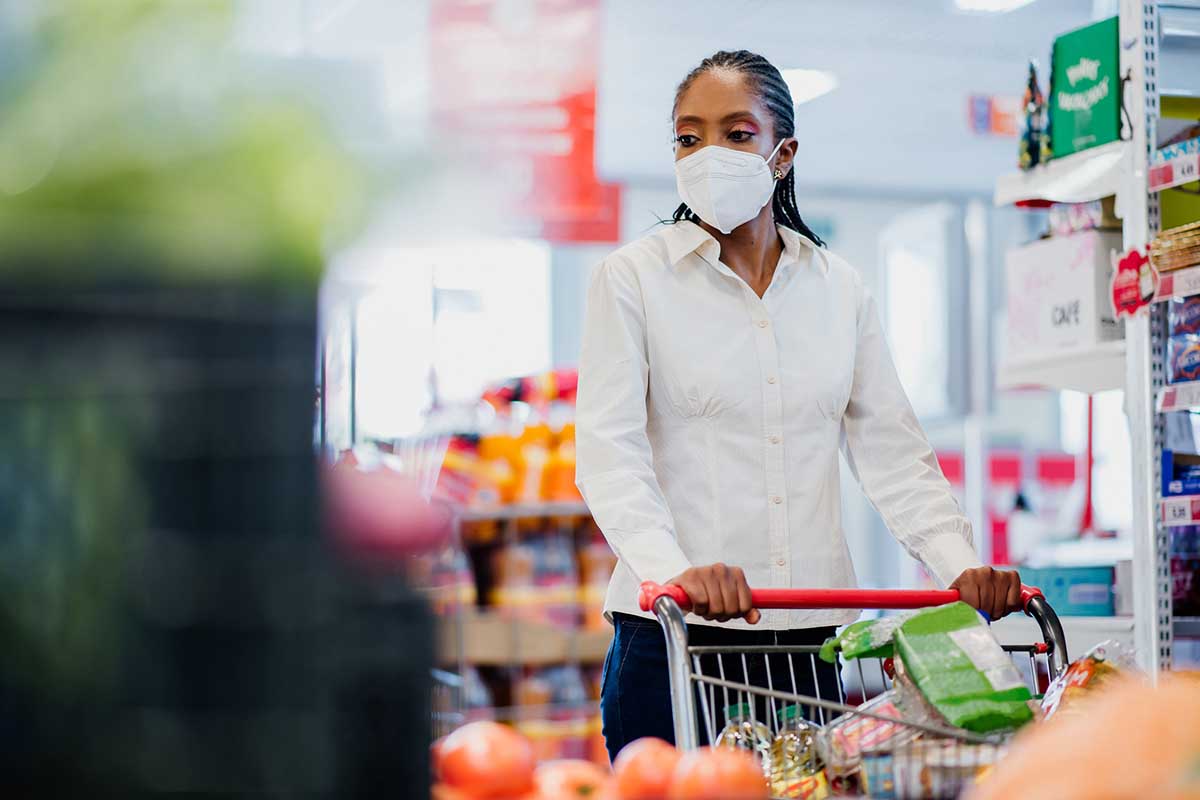COVID-19 Masks Revisited

In March 2021, I wrote an article for this blog about how and why you should wear a mask to protect yourself and others against COVID-19. At the time, case numbers were dropping and a lot of us started returning to more normal levels of social interaction.
Then along came the Delta and Omicron variants of the SARS-CoV-2 coronavirus, which are so much more contagious than previous versions that it caused a rapid surge in infections and hospitalizations and overwhelmed many hospitals again.
It’s time for me to revisit this topic…because the safety protocols have evolved, just like the coronavirus itself.
Being fully vaccinated and boosted is extremely effective at protecting most people from serious illness and hospitalization from COVID-19. According to the CDC, fully vaccinated Americans are 14 times less likely to die of COVID-19 than those who are unvaccinated, and individuals who have received a booster shot are 97 times less likely to die.
Along with the vaccine, masks remain an important tool in fighting COVID-19. So, yes, we still should wear masks. The CDC says that everyone above the age of two should wear a mask in all indoor public places or crowded outdoor spaces.
Increasing the Quality of Our Protection
In my last post about this, I talked extensively about cloth masks — because at the time they were relatively easy to come by and pretty successful in preventing spread. But now it’s becoming clear that cloth masks may not be nearly as effective against the Omicron variant.
The CDC urges us to consistently wear the most protective and well-fitting face mask possible. Here are the masks the CDC currently recommends, from most to least protective:
NIOSH-approved respirators, including N95s
Disposable surgical masks and KN95s
Layered, finely-woven masks
Loosely woven cloth masks
Remember, any protection is better than none, but more protection is better than some. And no matter what kind of mask you’re wearing, a tight fit is absolutely key.
Getting a Tight Fit
If air can escape or enter around the edges of your mask, where it touches your face, then the mask will not offer you very good protection. It must fit snugly over your nose, mouth, and chin. You need to be breathing through the mask, not around it.
All masks should have a metal strip to help them form a tight fit across the bridge of your nose. If you’ve adjusted that strip carefully and air is still escaping, this video from the CDC shows you how to make a disposable mask more airtight.
If you wear glasses, and they fog up when you’re wearing a mask, that means there isn’t a tight enough seal. Some people find that twisting each ear loop once between the mask and your ears (forming a figure eight) helps eliminate space through which air can escape.
Wearing a second mask on top of the first can also help, says the CDC. The second mask pushes down on the first one, creating a better fit. It also adds more layers of protection to reduce the amount of respiratory droplets that can get through.
What Else You Can Do to Stay Safe
Get vaccinated even if you have had COVID-19. Get a booster if you haven’t had one yet.
Wash your hands often, with warm water and soap, for at least 20 seconds each time. If warm water and soap aren’t available, use hand sanitizer frequently.
Don’t touch your face after being out in public until you’ve thoroughly washed your hands.
Stay at least six feet away from anyone who doesn’t live in your home.
Will Life Ever Return to Normal?
Believe me, I want to stop fearing for my safety and the safety of my family just as much as anyone. I’d love to believe that 2022 is the year the pandemic will end, and that COVID-19 will go from being a devastating public health crisis to something much less dangerous, like the common cold or the flu. But, we need to acknowledge that new variants of the virus are expected to continue to emerge and they could be more or less dangerous, depending on a variety of factors.
There are some signs that the Omicron wave may be reaching its peak in many parts of the country, but we’re certainly not out of the woods yet.
We may be sick of wearing masks and taking so many other public health precautions. But if we really want to stay safe and for this pandemic to end, we need to keep doing what works, so let’s keep those masks on.







